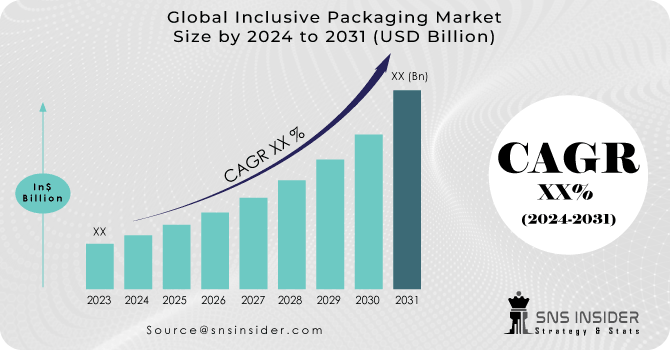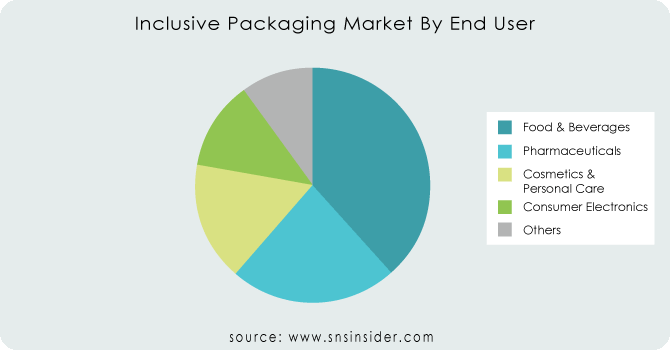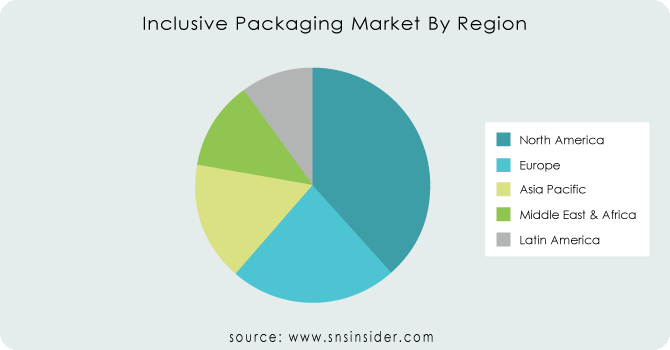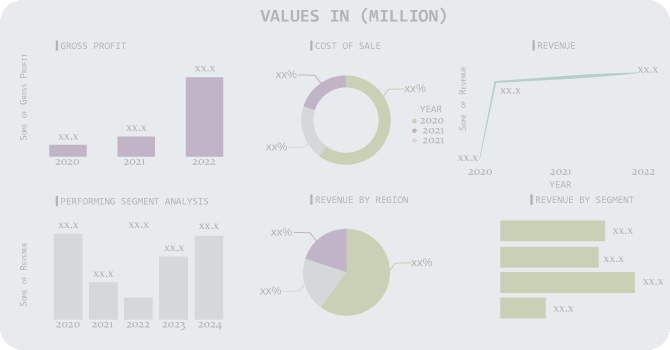Inclusive Packaging Market Report Scope And Overview:
The Inclusive Packaging Market is rapidly growing, spurred by a focus on accessibility and convenience for diverse consumer groups, including those with disabilities and the elderly. Inclusive packaging involves designing solutions that cater to varying physical capabilities and age groups, ensuring easy handling, readability, and effortless opening. This trend is driven by increased awareness, demographic shifts, and legal mandates emphasizing accessibility. Inclusive packaging goes beyond physical design to include clear labeling, easy-to-read instructions, and intuitive opening mechanisms. The industry is innovating with ergonomic designs, tactile aids, and technology integration. This trend spans various sectors, reflecting broad application. The commitment to inclusive packaging aligns with consumer expectations and regulatory requirements, propelling market evolution.

Get More Information on Inclusive Packaging Market - Request Sample Report
ISO 1780:2015 outlines standards established by the International Organization for Standardization (ISO) for designing inclusive packaging. These guidelines emphasize easy access and prompt brands to evaluate factors like the force required to open packages, the potential need for tools, and the user-friendliness of opening mechanisms. Further considerations include the precise location of openings and the use of both instrument-driven and user-centric evaluation techniques. Adhering to these standards ensures that packaging accommodates everyone, including those with limited strength or dexterity. However, the objective extends beyond regulatory compliance; it's about creating a product experience that genuinely acknowledges and values every consumer.
MARKET DYNAMICS
KEY DRIVERS:
-
Increased awareness and societal emphasis on inclusivity drive the demand for packaging solutions that cater to diverse consumer needs.
The growing recognition and societal focus on inclusivity are fueling the demand for packaging solutions that accommodate a wide range of consumer requirements. This trend reflects a shift towards acknowledging and valuing diversity in consumer preferences, lifestyles, and accessibility needs. As consumers become more conscious of inclusivity, they seek packaging that not only protects and showcases products but also considers factors such as ease of use, sustainability, and inclusivity for individuals with diverse backgrounds and abilities.
-
Government regulations and international standards are pushing companies to adopt inclusive packaging designs to ensure accessibility for all.
RESTRAIN:
-
Balancing functionality, cost, and aesthetic appeal in inclusive packaging designs poses a significant challenge for manufacturers.
OPPORTUNITY:
-
Advancements in technology, such as augmented reality and smart packaging, provide opportunities for creating more inclusive packaging solutions.
Technological advancements, like augmented reality and smart packaging, present promising opportunities for developing inclusive packaging solutions. These innovations enable packaging to go beyond traditional functions, offering interactive and intelligent features that enhance user experience, accessibility, and inclusivity. For instance, augmented reality can provide additional product information or instructions in a user-friendly format, while smart packaging can offer features like real-time tracking, freshness indicators, or even accessibility features for individuals with disabilities.
-
There is an untapped market potential in developing regions where awareness of inclusive packaging is still emerging.
CHALLENGES:
-
The absence of global standards for what constitutes 'inclusive packaging' can lead to inconsistency in adoption and consumer confusion.
Impact Of Russia Ukraine War
The Russia-Ukraine crisis is impacting the Inclusive Packaging sector globally. Sanctions on Russia could disrupt the supply chain, leading to material shortages and increased costs. Market access in Ukraine is also constrained, affecting companies operating in or connected to the region. Operational challenges may hinder growth prospects in inclusive packaging.
Supply chain disruptions from Russia and Ukraine, key suppliers of packaging materials, may raise costs and cause delays in the inclusive packaging market. Logistical challenges like transportation disruptions and higher freight costs worsen distribution issues. The crisis also leads to cost volatility, affecting energy and raw material prices, potentially increasing end-user costs and hindering the adoption of inclusive packaging. Currency fluctuations due to economic uncertainties and sanctions may further impact global trade in the sector. During market uncertainty, economic effects might reduce consumer purchasing power, potentially impacting demand for products with inclusive packaging, especially in conflict-affected regions. Consumer focus on essential goods could also lessen discretionary spending on products with inclusive packaging, especially in non-essential categories.
Impact of Economic Slowdown
The packaging industry, being a backward linkage sector, depends on industries like food processing and ready-made garments. Consequently, it has faced challenges for the past 18 months due to the economic slowdown affecting the overall economy. The packaging industry is experiencing a downturn due to persistent economic uncertainty and the effects of a more expensive US dollar, along with higher gas and power prices. The market previously expanded due to a surge in local consumer product manufacturing. However, demand has now stalled due to the effects of the global economic crisis and increased inflationary pressures domestically.
Despite challenges, economic downturns can spur innovation in the Inclusive Packaging market. Companies may leverage inclusive packaging to differentiate themselves and attract consumers seeking added value, convenience, and accessibility. Essential sectors like pharmaceuticals and food products may sustain or increase interest in inclusive packaging due to their resilience. Strategic adjustments, including cost optimization and re-evaluating packaging designs, become essential while maintaining inclusivity. The economic slowdown may also lead to increased focus on sustainability, with inclusive packaging aligning well with efforts to reduce waste and optimize resource use.
KEY MARKET SEGMENTS
By Material
-
Plastic
-
Glass
-
Metal
-
Paper & Paperboard
-
Others
By Packaging Type
-
Rigid
-
Flexible
-
Semi-Rigid
By End User
-
Food & Beverages
-
Pharmaceuticals
-
Cosmetics & Personal Care
-
Consumer Electronics
-
Others

Get Customized Report as per Your Business Requirement - Request For Customized Report
REGIONAL ANALYSIS
North America emerges as a prominent player, driven by a robust regulatory framework promoting inclusivity and heightened consumer awareness regarding accessibility. The region's substantial consumer market and emphasis on corporate social responsibility contribute to the adoption of inclusive packaging practices. Europe follows suit, leveraging its large economy and stringent regulations advocating for inclusivity in packaging designs. The European Union's initiatives align with the market's focus on user-friendly packaging solutions. The Asia Pacific region presents an interesting landscape, with a burgeoning population and evolving consumer preferences. The strong expansion of industries, including pharmaceuticals and cosmetics, fuels the demand for inclusive packaging, while increasing disposable incomes in countries like India and China propel market growth.
Latin America and the Middle East & Africa regions, while showing potential, are still navigating the integration of inclusive packaging practices. Factors such as economic structures, varying degrees of consumer awareness, and regulatory developments contribute to the nuanced growth patterns in these regions.

REGIONAL COVERAGE:
North America
-
US
-
Canada
-
Mexico
Europe
-
Eastern Europe
-
Poland
-
Romania
-
Hungary
-
Turkey
-
Rest of Eastern Europe
-
-
Western Europe
-
Germany
-
France
-
UK
-
Italy
-
Spain
-
Netherlands
-
Switzerland
-
Austria
-
Rest of Western Europe
-
Asia Pacific
-
China
-
India
-
Japan
-
South Korea
-
Vietnam
-
Singapore
-
Australia
-
Rest of Asia Pacific
Middle East & Africa
-
Middle East
-
UAE
-
Egypt
-
Saudi Arabia
-
Qatar
-
Rest of Middle East
-
-
Africa
-
Nigeria
-
South Africa
-
Rest of Africa
-
Latin America
-
Brazil
-
Argentina
-
Colombia
-
Rest of Latin America
Key players
Some of the major players in the Inclusive Packaging Market are Amcor Plc, WestRock Company, Sonoco Products Company, Sealed Air Corporation, Berry Global Group Inc., Aptar Group Inc., DS Smith Plc, Crown Holdings Inc., Constantia Flexibles Group, Bemis Company Inc. and other players.
Amcor Plc -Company Financial Analysis

RECENT TRENDS
-
Consumer Convenience Technologies, a US-based company, has developed the world's inaugural aluminium screw cap, which demands 40% less force to open.
-
Unilever is introducing deodorant packaging with an emphasis on inclusivity.
-
From February 2022, Henkels Schwarzkopf will relaunch its Schauma range with a redesigned bottle allowing for clearer and more personal communication to consumers, along with lighter packaging containing at least 50 % recycled plastic.
| Report Attributes | Details |
|---|---|
| Base Year | 2023 |
| Forecast Period | 2024-2031 |
| Historical Data | 2020-2022 |
| Report Scope & Coverage | Market Size, Segments Analysis, Competitive Landscape, Regional Analysis, DROC & SWOT Analysis, Forecast Outlook |
| Key Segments | • By Material (Plastic, Glass, Metal, Paper & Paperboard, Others) • By Packaging Type (Rigid, Flexible, Semi-Rigid) • By End User (Food & Beverages, Pharmaceuticals, Cosmetics & Personal Care, Consumer Electronics, Others) |
| Regional Analysis/Coverage | North America (US, Canada, Mexico), Europe (Eastern Europe [Poland, Romania, Hungary, Turkey, Rest of Eastern Europe] Western Europe] Germany, France, UK, Italy, Spain, Netherlands, Switzerland, Austria, Rest of Western Europe]), Asia Pacific (China, India, Japan, South Korea, Vietnam, Singapore, Australia, Rest of Asia Pacific), Middle East & Africa (Middle East [UAE, Egypt, Saudi Arabia, Qatar, Rest of Middle East], Africa [Nigeria, South Africa, Rest of Africa], Latin America (Brazil, Argentina, Colombia, Rest of Latin America) |
| Company Profiles | Amcor Plc, WestRock Company, Sonoco Products Company, Sealed Air Corporation, Berry Global Group Inc., Aptar Group Inc., DS Smith Plc, Crown Holdings Inc., Constantia Flexibles Group, Bemis Company Inc. |
| Key Drivers | • Increased awareness and societal emphasis on inclusivity drive the demand for packaging solutions that cater to diverse consumer needs. • Government regulations and international standards are pushing companies to adopt inclusive packaging designs to ensure accessibility for all. |
| Restraints | • Balancing functionality, cost, and aesthetic appeal in inclusive packaging designs poses a significant challenge for manufacturers. |

